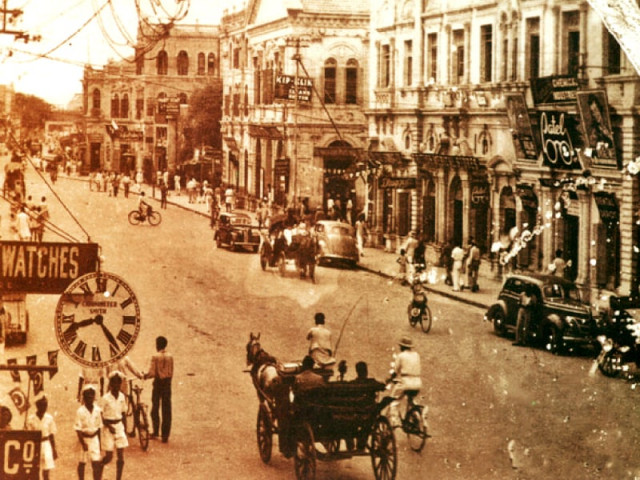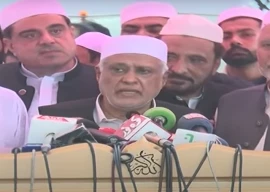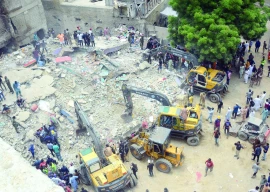
‘Karachi: Megacity of Our Times’ is the story of the transformation of a sleepy town of under 20,000 people into a vibrant metropolis - one of the largest in Asia today, which is loved by its residents despite its glaring shortcomings.
Though the book was first published around 16 years ago, the Oxford University Press invited eminent writer and historian Dr Hamida Khuhro, who edited the book along with Anwer Mooraj, to deliver a talk at its PECHS bookshop on Saturday.
The event was aimed to commemorate the Independence Day along with readings and a candid discussion on contents of the book, which evokes unmistakeable nostalgia for the Karachi that was.
The first part of the book is devoted to defining Karachi in a historical perspective when the Englishmen ruled, and divided the city into ‘white’ and ‘native’ quarters, eventually developing it into a metropolis. In the subsequent chapters, an impressive gamut of writers of Karachi, take the reader through post-independence developments in politics, economics, the arts, demography and architecture. While some of the articles are very personal, evoking nostalgia for the Karachi that was, others are analytical, drawing on available data to predict the course that this turbulent city will take in the future.
The swift sale of the second edition of the book, which first came out on the occasion of Pakistan’s 50th anniversary, was a matter of satisfaction for Khuhro, who said that the demand for the book has increased over the years.
Recalling the days when she along with Mooraj started working on it around 16 years back, Khuhro remembered Karachi as a much different and relaxed city. “It is saddening that today it is described as one of the most dangerous city in the world,” she said.
For Khuhro, Karachi had always been known for its multiculturalism and tolerance; however, lack of planning since the Partition was one of the major reasons for the problems that the city became embroiled in. “At the time of Partition the city, for the first time, came across the serious issue of migration as people from the countryside as well as from abroad began to pour in,” she said. “There was, moreover, no master plan to know what kind of a city it is going to be.”
The influx of people into the city led to the mushrooming of slums that expanded even in the absence of primary facilities, including water, sanitation and employment. “Despite these issues, as the city grew it, nevertheless, used to be a children-friendly and culturally active city. There were tram rides from Soldier Bazaar to Keamari and it was the safest and most vibrant amongst all the metropolises evolved during the British era, including Bombay and Calcutta.”
There were attempts after the Partition to develop Karachi as it was the capital of the newly formed country, Khuhro noted, giving the example of Nazimabad, which was planned to be a housing area for civil servants and bureaucrats.
Dr Khuhro argued that whatever change had occurred in other countries had happened through citizens so, despite the poor law and order situation, the people of Karachi would have to get involved in finding solutions. “There is no other option. Not everyone can leave the country to settle abroad.”
Published in The Express Tribune, August 19th, 2013.

















COMMENTS
Comments are moderated and generally will be posted if they are on-topic and not abusive.
For more information, please see our Comments FAQ